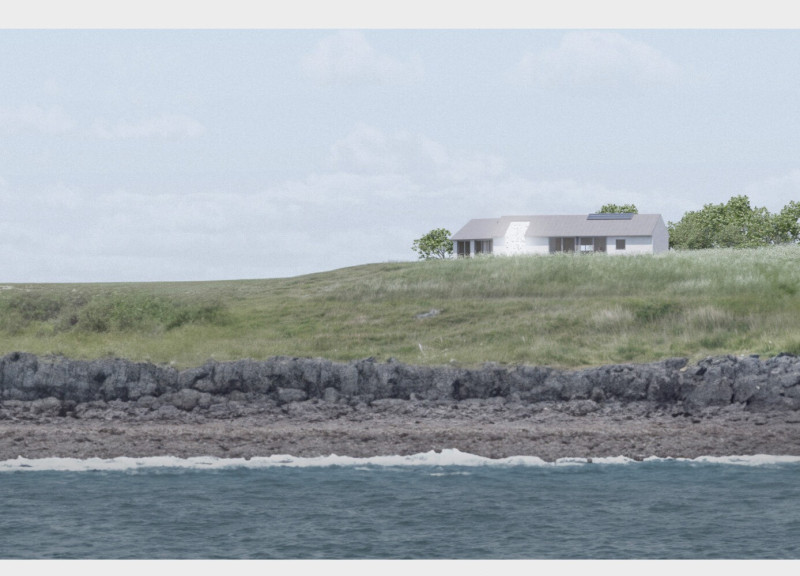5 key facts about this project
The overall form of the building is characterized by its fluid, organic lines that harmoniously blend with the natural topography. This design choice is deliberate, reflecting the project's commitment to minimizing its ecological footprint while maximizing its connection to nature. Large, strategically placed windows ensure ample natural light throughout the interior spaces, contributing to energy efficiency and occupant comfort. The windows also provide unobstructed views of the surrounding landscape, allowing residents to connect visually and emotionally with their environment.
Central to the project is an innovative use of materials that complements its architectural vision. The choice of durable yet visually appealing materials, including concrete, wood, and glass, creates a modern aesthetic while ensuring longevity and sustainability. These materials are not only practical but also contribute significantly to the tactile experience of the spaces. For instance, the warm tones of wood used in key living areas evoke a sense of comfort, while the expansive glass panels facilitate a seamless transition between indoor and outdoor spaces.
A remarkable aspect of this design is its commitment to sustainability. The project incorporates features such as green roofs and rainwater harvesting systems that minimize resource consumption and promote biodiversity. By integrating vegetative elements into the structure, the design not only enhances its visual appeal but also serves to insulate the building, further reducing energy demands. Additionally, the layout of communal areas encourages social interaction, contributing positively to the overall community dynamics.
Detailing is another essential component of this architectural endeavor. Careful attention has been given to functional elements such as circulation paths and transition spaces, which guide residents naturally through the project. These pathways are designed not simply to connect different zones but to enhance the experience of movement throughout the structure. The design encourages exploration and interaction, fostering a sense of belonging and ownership among users.
The architectural plans and sections reveal a meticulous approach to crafting spaces that are both flexible and adaptable to various uses. Private and public areas are thoughtfully delineated, allowing for personal privacy while simultaneously offering venues for communal gatherings. This delicate balance illustrates the project’s overarching philosophy of creating a harmonious living environment that accommodates diverse lifestyles and promotes community engagement.
Moreover, the architectural ideas reflected in this project showcase an understanding of the cultural and environmental context. The design subtly incorporates elements that resonate with local traditions and environmental features, creating a narrative that echoes the history and norms of the community. By respecting the local character, the design transcends mere functionality; it becomes a part of the living fabric of the area.
In summary, this architectural design project stands as a testament to the thoughtful exploration of space, materiality, and sustainability. It is a prime example of how contemporary architecture can engage with its environment meaningfully while prioritizing user experience. Readers are encouraged to delve deeper into the architectural presentation to explore the intricate architectural sections, plans, and designs that underpin this project and discover how these elements come together to create a cohesive and inviting living space.























